Best East Coast small towns to live in
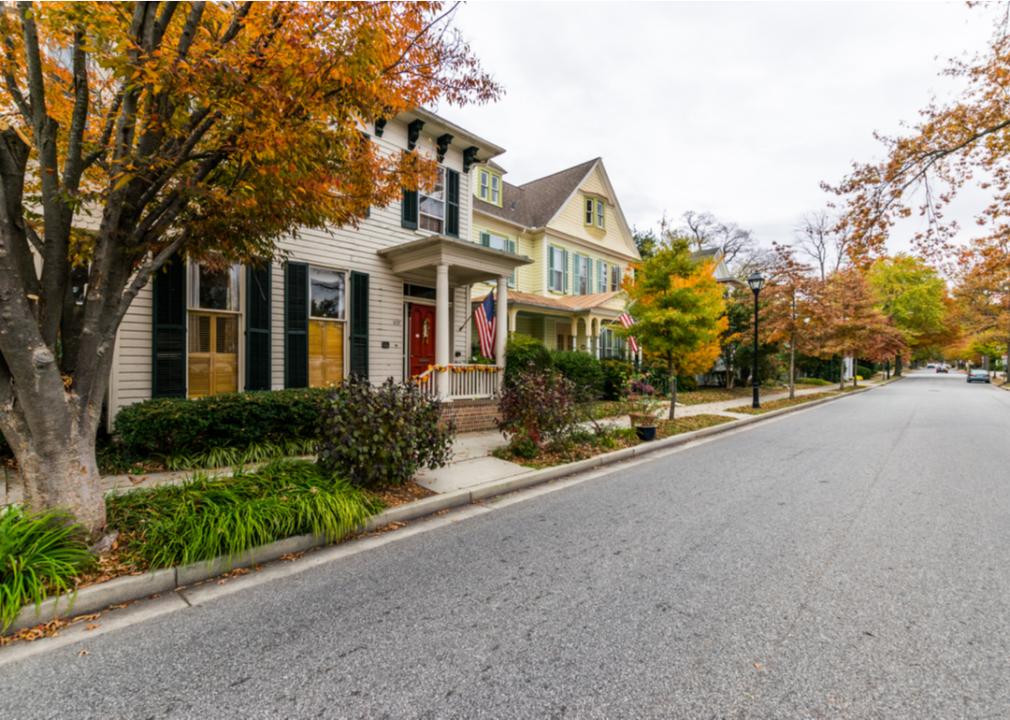
Christian Hinkle // Shutterstock
Best East Coast small towns to live in
If you want to live somewhere where you know your neighbors, where you can go kayaking or swim in a lake by the mountains, where your kids can attend top-notch schools, or where you’ll be surrounded by history, these communities on the East Coast might be for you.
Most of the listings are within commuting distance of larger cities such as New York City or Washington D.C., but many have kept their small-town feel.
Stacker referenced Niche’s 2021 Best Places to Live study, and narrowed the results to East Coast locations with under 5,000 residents. Niche calculated the Best Places to Live according to factors like cost, safety, weather quality, access to healthy living, and several other items. For each town, Stacker included the resident population along with figures for owners, renters, and median household income.
While this data is the most current available, some housing statistics Niche used to calculate its rankings—such as median home values and housing costs—are not entirely reflective of the current housing market. Since these numbers are subject to frequent changes and housing represents 5% of Niche’s total ranking, those statistics are omitted from forthcoming data points and do not detract from Niche’s overall assessment of the Best Places to Live.
You may also like: Best place to live in every state
![]()
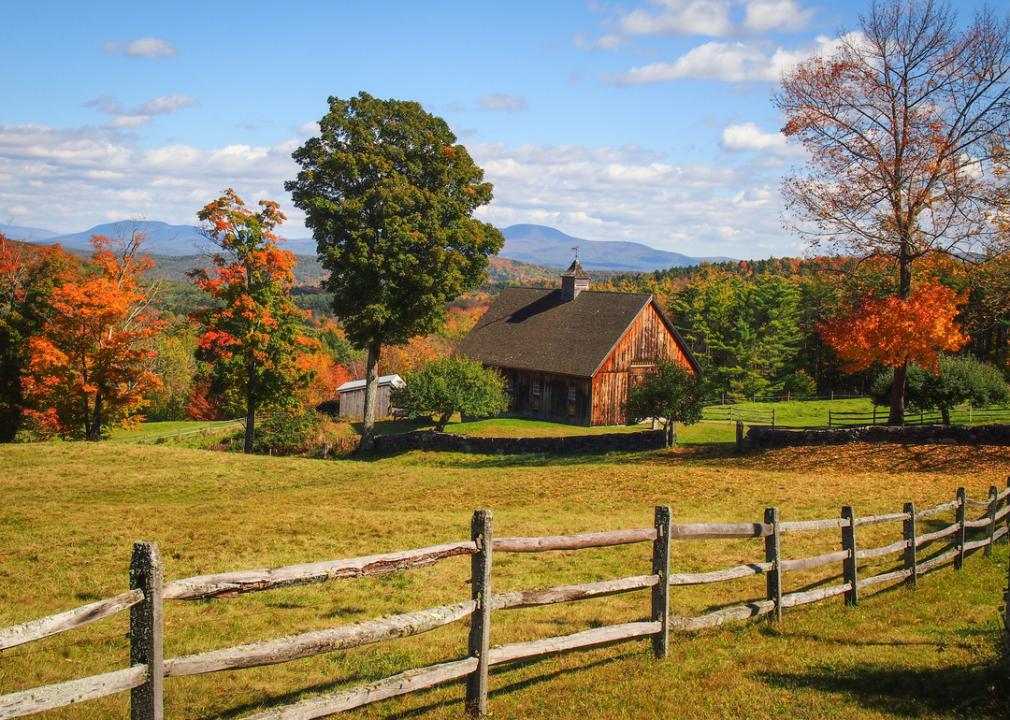
Bram Reusen // Shutterstock
#25. Norwich, Vermont
– Population: 3,339
– Median household income: $121,563
– Owners: 73%
– Renters: 27%
A suburb of Hanover, New Hampshire, this town across the Connecticut River is home to one of the country’s few interstate public school systems. The Dresden School District is shared by Norwich and Hanover. This town is actually named for Norwich, Connecticut, where its first settlers came from. Because this is Vermont, winter sports are big here, whether that be skiing on The Dartmouth Skiway, skating on Occom Pond near the campus of Dartmouth College, or traveling the Vermont countryside on a husky-drawn sled.
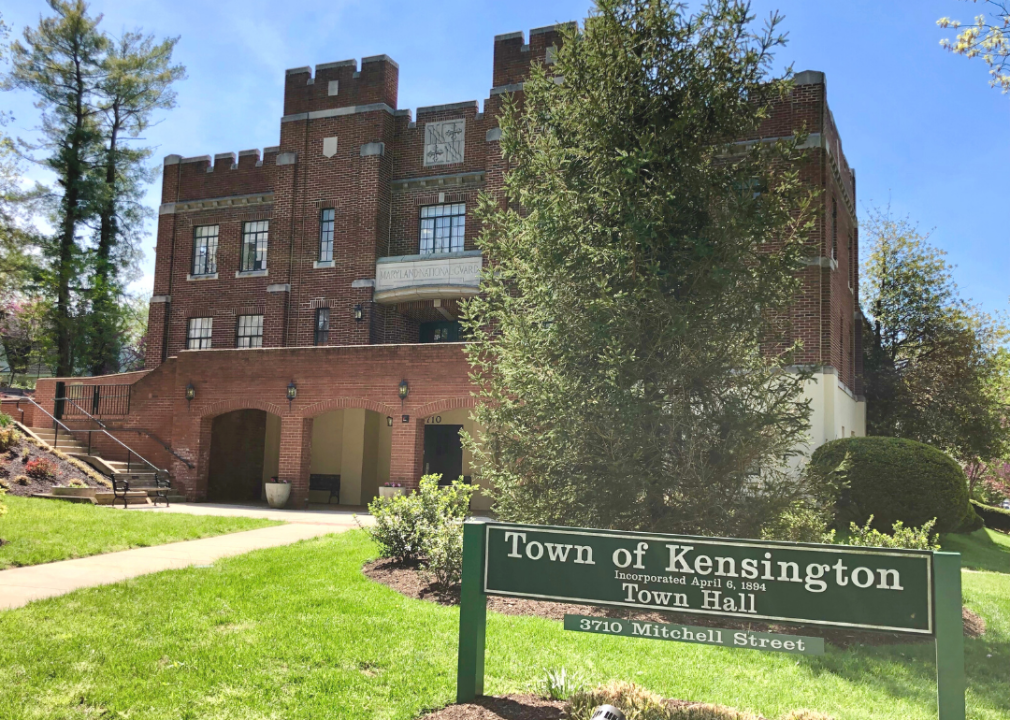
TownCreative // Wikimedia Commons
#24. Kensington, Maryland
– Population: 2,098
– Median household income: $125,357
– Owners: 61%
– Renters: 39%
Kensington, Maryland, started out as Joseph’s Park, a land grant to Willam Joseph in 1689. Joseph’s son used more than 4,000 acres for farmland until he sold it to Daniel Carroll, one of only five men to sign both the Articles of Confederation and the Constitution. Today, Kensington is a suburb of Washington D.C. and known for its Victorian homes and its Antique Row collection of antique shops.
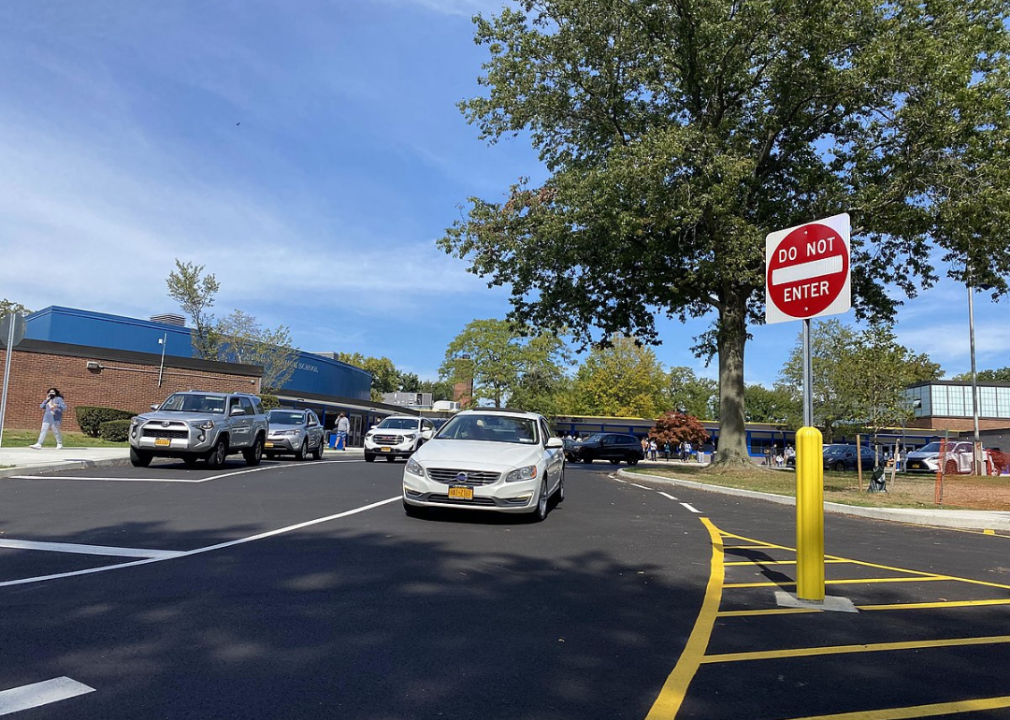
AITFFan1 // Wikimedia Commons
#23. Searingtown, New York
– Population: 4,593
– Median household income: $161,188
– Owners: 99%
– Renters: 1%
Searingtown, a hamlet on the North Shore of Long Island, falls within the highly regarded Herricks public school district. A suburb of New York City, Searingtown came of age in the 1950s and 1960s. The town name comes from the Searing family, who were among the first to attend a Methodist Church erected in the late 1780s.
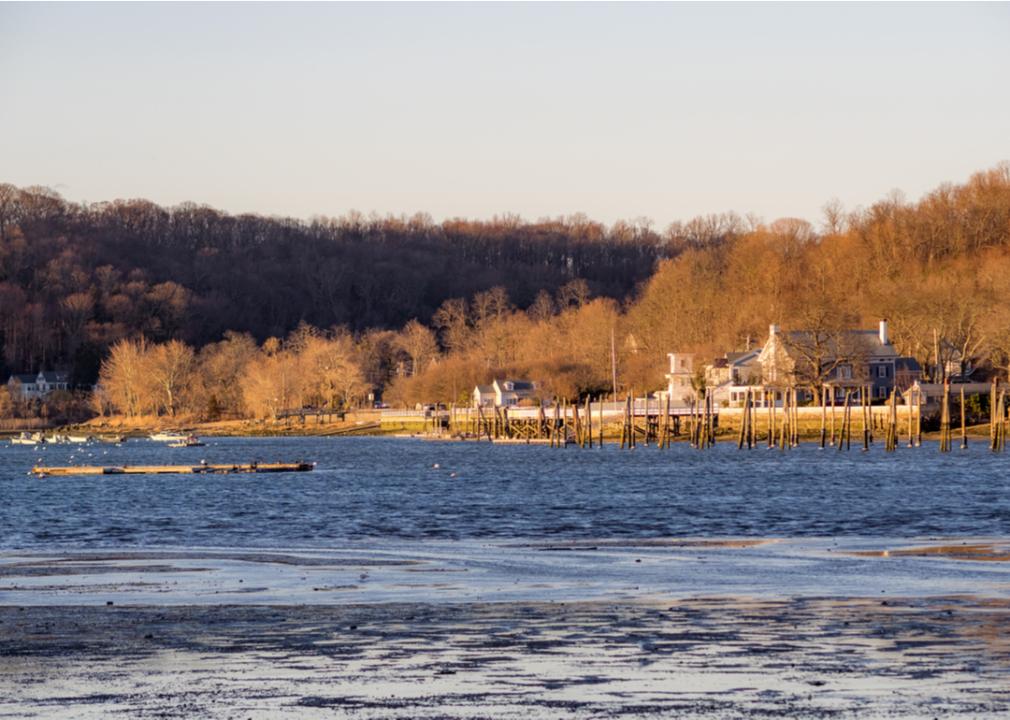
Micha Weber // Shutterstock
#22. Cold Spring Harbor, New York
– Population: 4,932
– Median household income: $202,208
– Owners: 88%
– Renters: 12%
Cold Spring Harbor, also on Long Island, is a picturesque place to set off fishing or kayaking on the water or to take in the area’s history at the Whaling Museum and Education Center. For recreation, there’s also the Cold Spring Harbor Fish Hatchery & Aquarium. The New York State Green Belt Trail, which provides 20 miles for hiking, begins at Cold Spring Harbor Park and crosses Long Island.
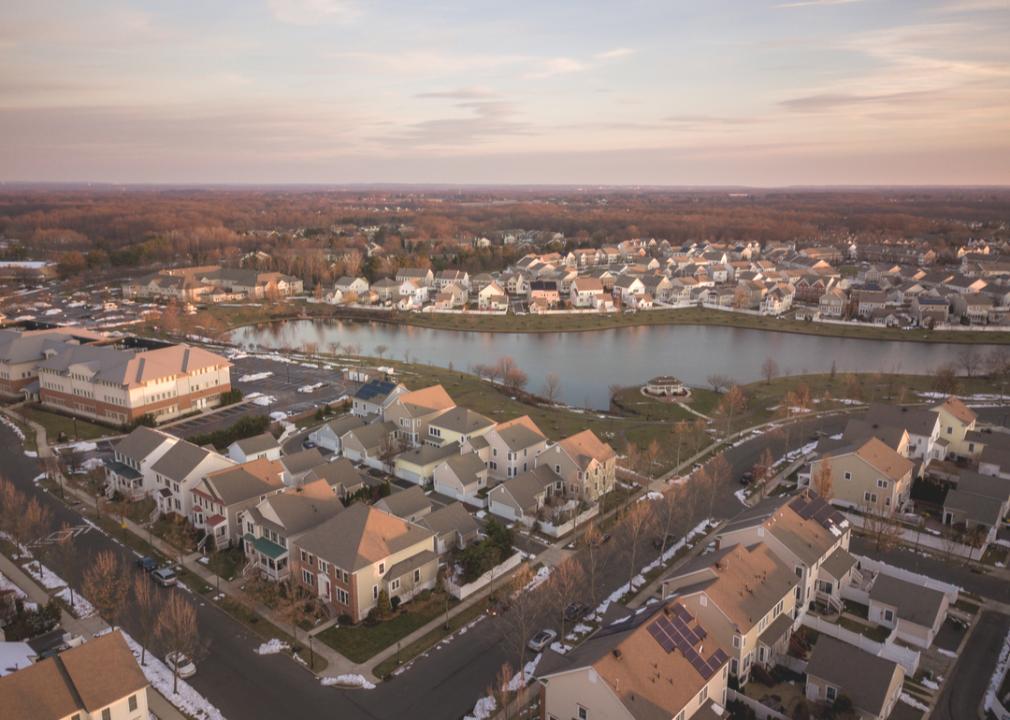
FotosForTheFuture // Shutterstock
#21. Robbinsville, New Jersey
– Population: 2,836
– Median household income: $169,327
– Owners: 77%
– Renters: 23%
Located 62 miles southwest of New York City, Robbinsville Township was called Washington Township until 2007, when its residents voted to change the name. It is home to the Working Dog Winery, and other nearby attractions include the Sayen House and Gardens, and the Abbott Marshlands, next to the Delaware River. Robbinsville’s slogan, a play on its position in the state, is “Be the center of it all.”
You may also like: Best county to live in for every state
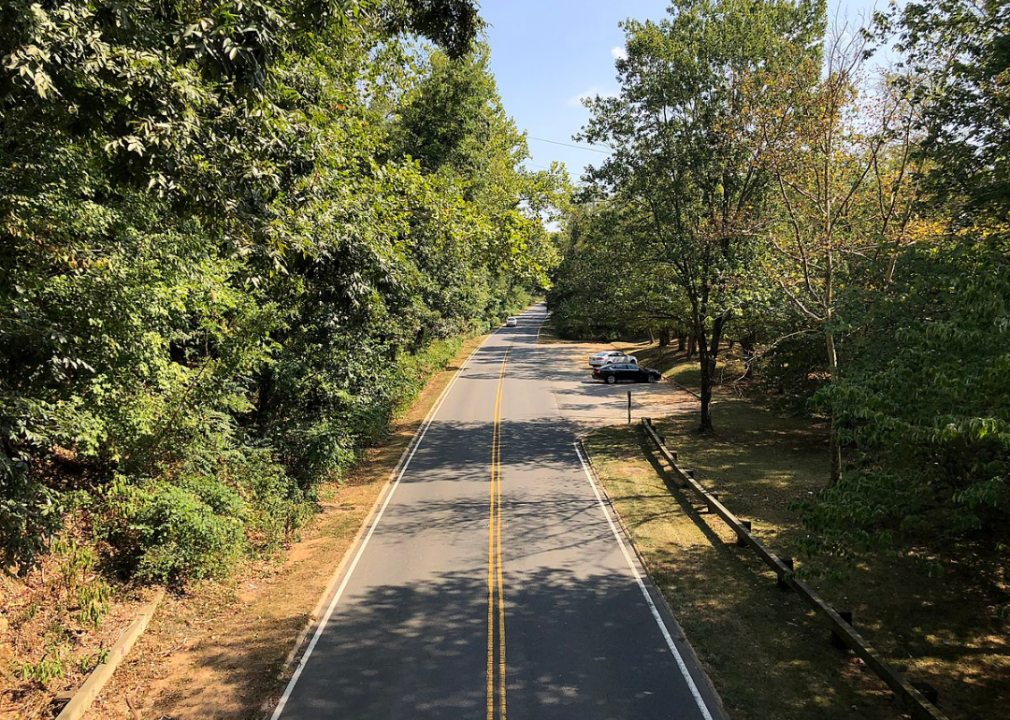
Famartin // Wikimedia Commons
#20. Brookmont, Maryland
– Population: 3,921
– Median household income: $239,943
– Owners: 81%
– Renters: 19%
A neighborhood within the larger area of Bethesda, Brookmont runs along the Potomac River, the Chesapeake, and Ohio Canal. Brookmont consists of just over 200 homes, a mix of Cape Cods, Craftsman and other styles of architecture. Also near the District of Columbia, Brookmont has a civic league, an arts alliance, and a preschool at the interfaith Brookmont Church.
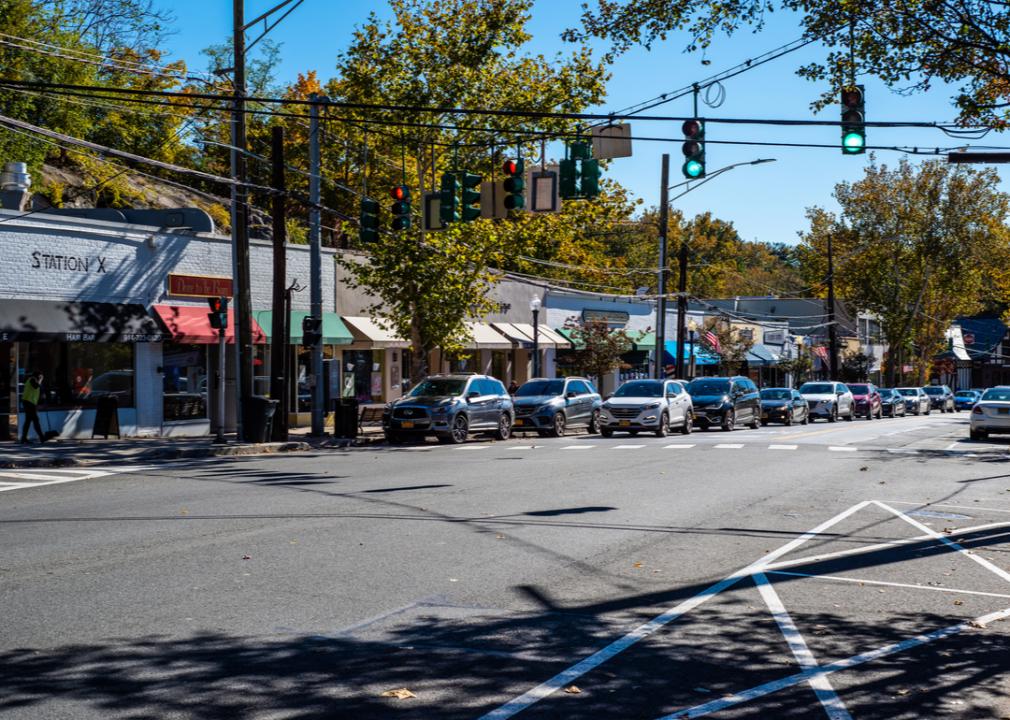
E Pasqualli // Shutterstock
#19. Hartsdale, New York
– Population: 4,550
– Median household income: $88,235
– Owners: 75%
– Renters: 25%
A hamlet in Westchester County, New York, Hartsdale offers an easy commute to New York City. With only 3 square miles, Hartsdale has a few quirky sections of town. One is called Poet’s Corner (its streets named for poets), and another is College Corners, where the streets have names like Harvard and Yale. During the American Revolution, the Odell House served as the headquarters for the French Gen. Jean Baptiste Donatien de Vimeur, comte de Rochambeau.
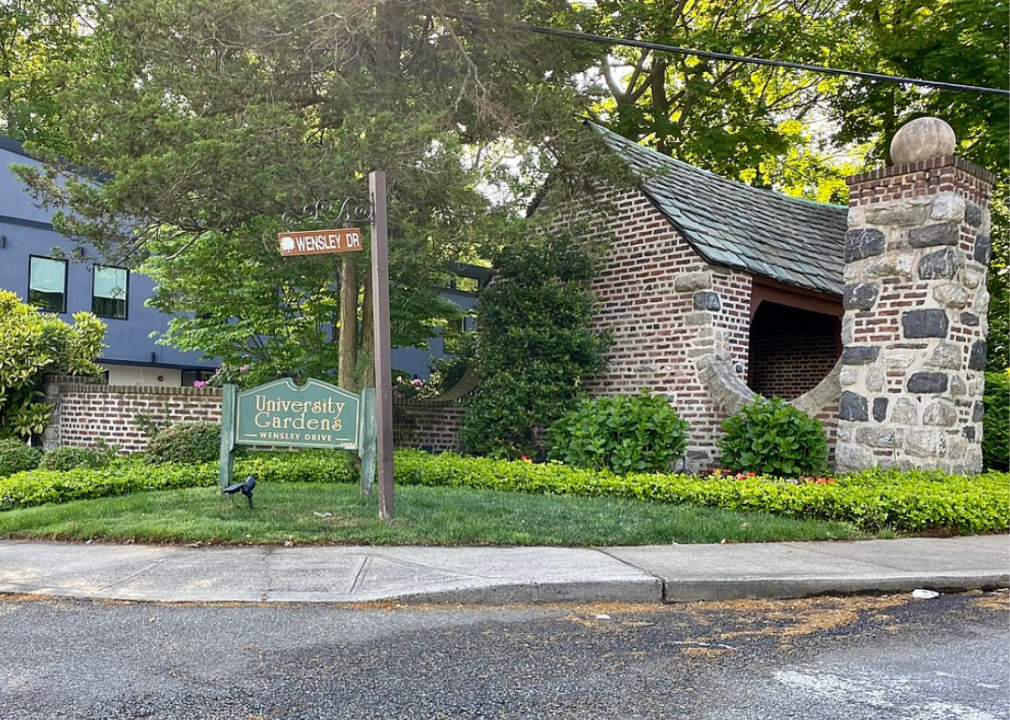
LINYperson615 // Wikimedia Commons
#18. University Gardens, New York
– Population: 4,182
– Median household income: $116,711
– Owners: 76%
– Renters: 24%
University Gardens is in Great Neck, Long Island. Living up to its name, the University Gardens property association says it is a community of 218 homes and 2,000 trees. This small town was established in 1927, with covenants attached to property deeds promoting “a green and open physical environment with harmonious architecture,” according to the association. Community facilities include a pool, tennis court, and playground.
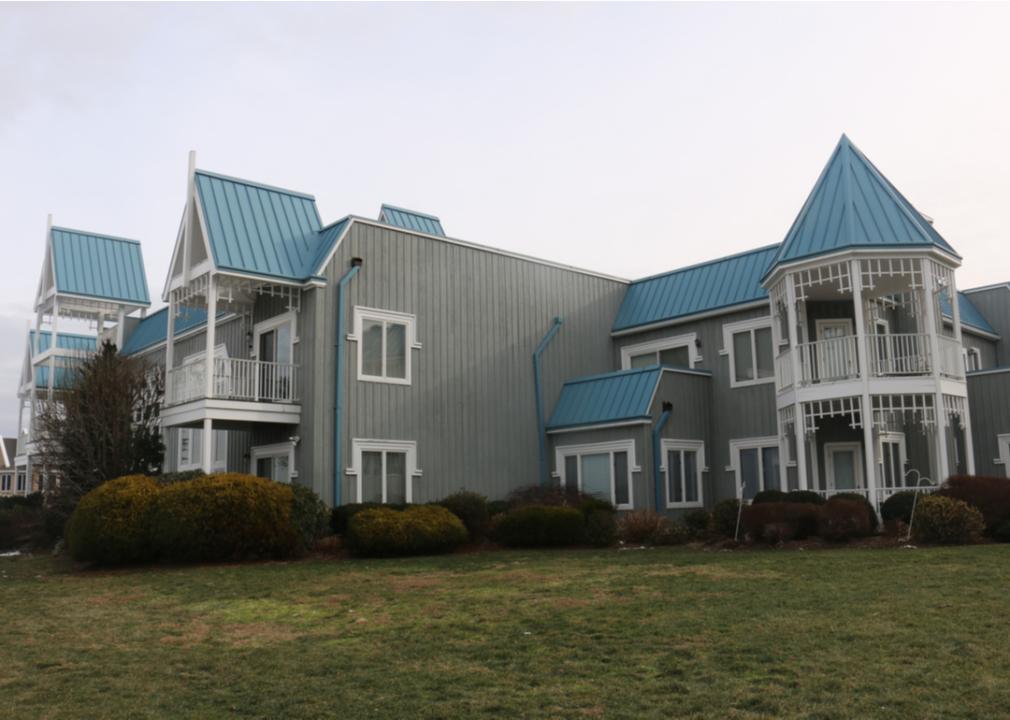
quiggyt4 // Shutterstock
#17. Piermont, New York
– Population: 2,540
– Median household income: $124,716
– Owners: 67%
– Renters: 33%
Piermont, along the Hudson River and just north of New York City, is a village with outdoor cafes, unique boutiques, art galleries, and lots of history. The community’s old railroad station was built in 1873, and saved by the Piermont Historical Society to become part of the National Register of Historic Places. Exhibits in the train station are dedicated to a meeting between George Washington and Sir Guy Carleton on the village shore, and the Piermont papermill, which opened in 1901. You can still even see the fly mill from the papermill’s steam driven electrical system.

LINYperson615 // Wikimedia Commons
#16. Thomaston, New York
– Population: 2,629
– Median household income: $128,889
– Owners: 83%
– Renters: 17%
Thomaston is a village within the town of Great Neck, Long Island. Once home to the likes of Groucho Marx, Thomaston was incorporated in 1931, though the area had little historical identity back then, according to village historians. What Thomaston did have was a railroad to New York for commuters. Congressman Benjamin Wood lived there in a Second Empire-style house built in 1858, replete with a cupola and wrap-around porch.
You may also like: Best places to raise a family in the Midwest
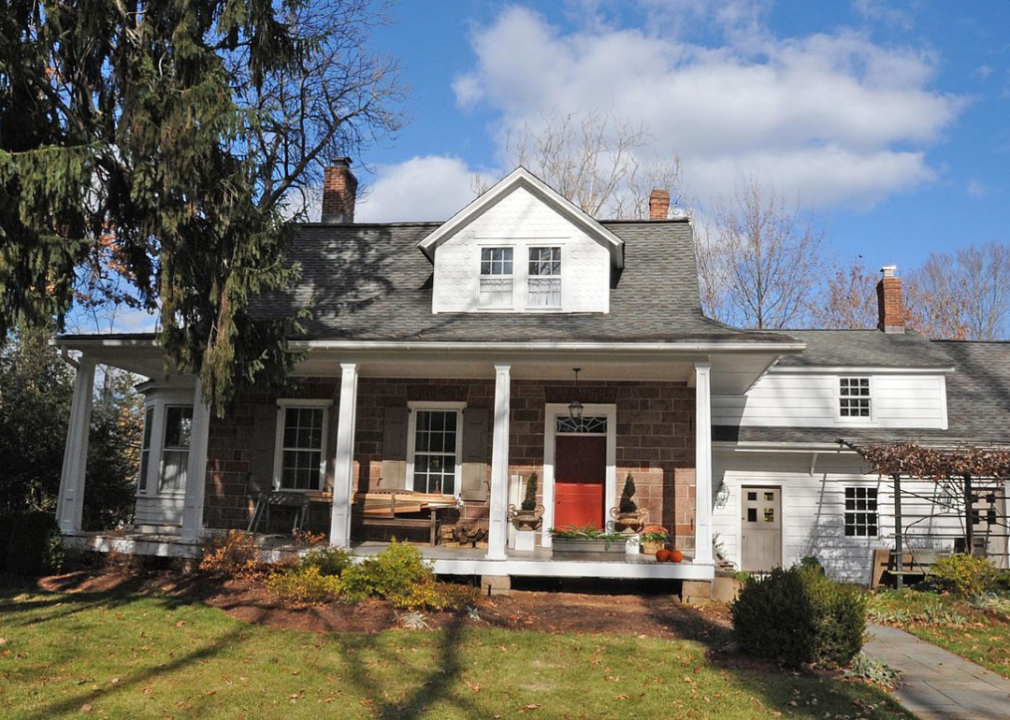
JERRYE & ROY KLOTZ, M.D. // Wikimedia Commons
#15. Haworth, New Jersey
– Population: 3,418
– Median household income: $178,450
– Owners: 95%
– Renters: 5%
Haworth was featured in the New York Times in 1908 under the headline “Growth of New Jersey’s ‘Concrete Town’” because of the concrete homes that were being constructed there. Among its notable residents was Heather Reveller, who had “the most sensational show record of any Scottish Terrier ever exhibited in America.” The dog’s owner, Willard H. Wright, wrote mysteries under the name S.S. Van Dine. Haworth, a 2.26-square-mile borough in Bergen County, is a short drive to New York City.
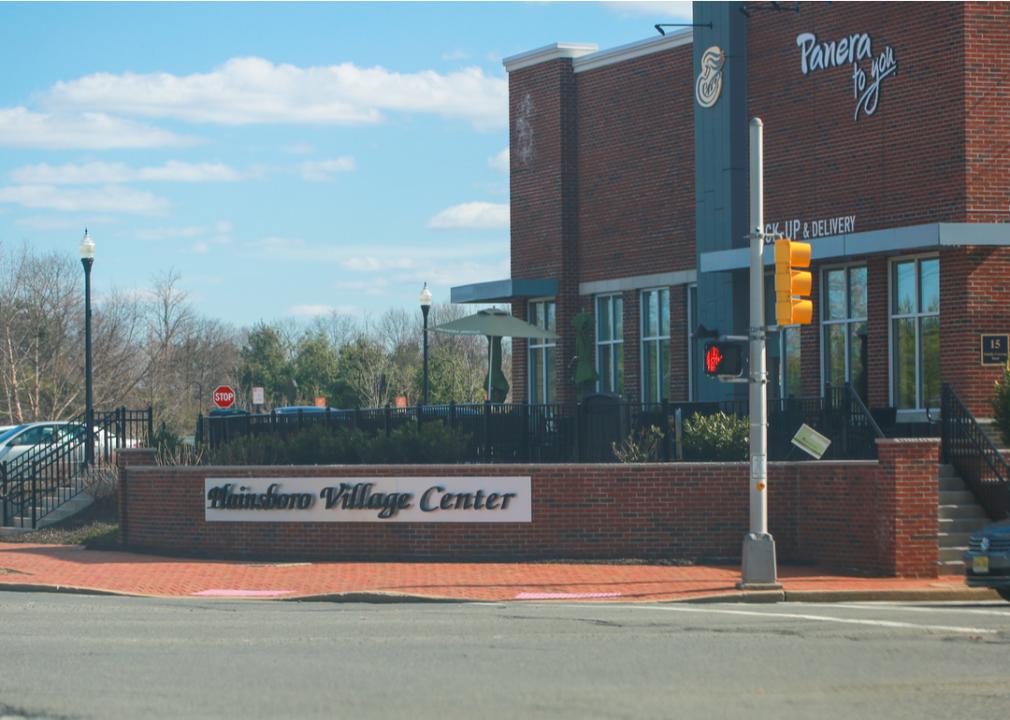
Helen89 // Shutterstock
#14. Plainsboro Center, New Jersey
– Population: 2,771
– Median household income: $102,833
– Owners: 33%
– Renters: 67%
Plainsboro Center is a section of Plainsboro Township, home to the Wicoff House Museum, built around 1880 and now on the National Register of Historic Places. Once mostly farmland, Plainsboro is a suburban community with many corporate headquarters and research facilities. Princeton University and the state capitol building in Trenton are nearby.
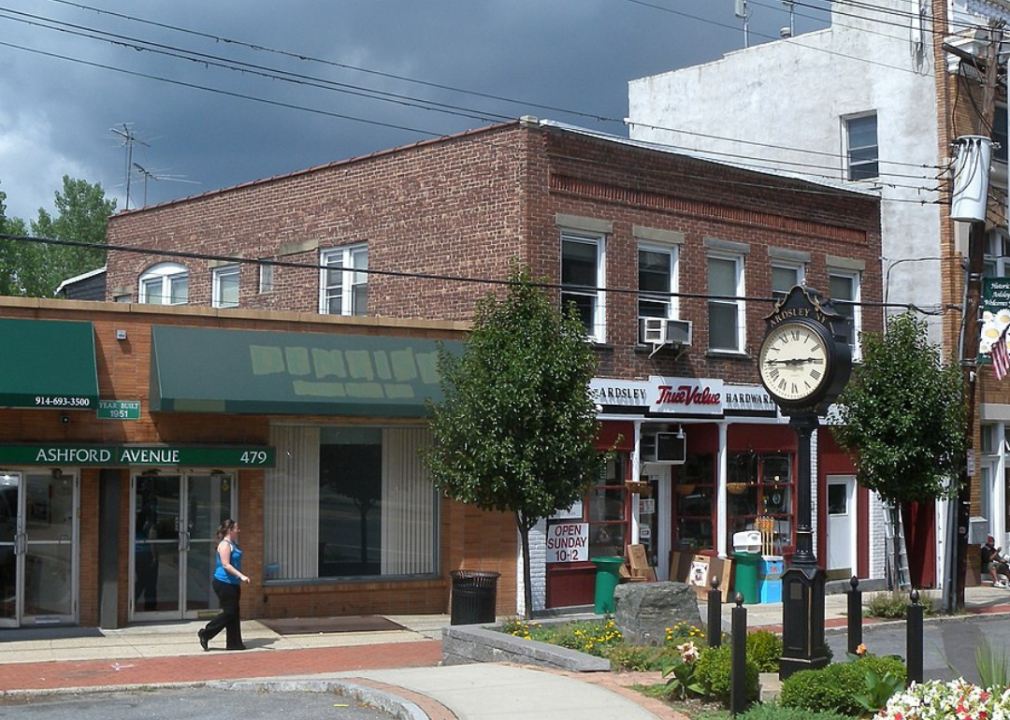
Jim.henderson // Shutterstock
#13. Ardsley, New York
– Population: 4,512
– Median household income: $160,880
– Owners: 81%
– Renters: 19%
A village in Westchester County and a suburb of New York, Ardsley was part of the Frederick Philipse Manor, which was broken up after the American Revolution. Philipse stayed loyal to England and fled after the war. Much of Ardsley’s original business district was lost to the New York State Thruway in the 1950s. Today it has nine parks and more than 60 acres of parkland.
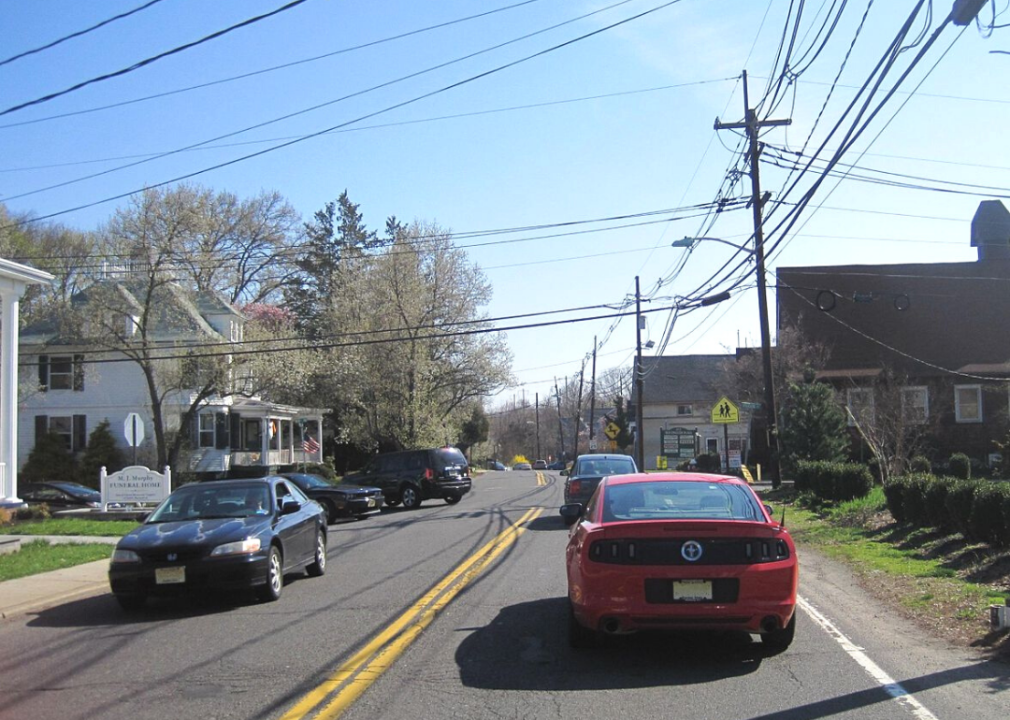
Mr. Matté // Wikimedia Commons
#12. Monmouth Junction, New Jersey
– Population: 2,906
– Median household income: $150,500
– Owners: 93%
– Renters: 7%
Monmouth Junction is home to the Princeton Japanese Church, which serves the area’s Japanese community, many of whom arrived in the United States for work or education. The Red Maple Farm (or Gulick House) was built in 1740, and later became a stop on the Underground Railroad. It is on the National Register of Historic Places.
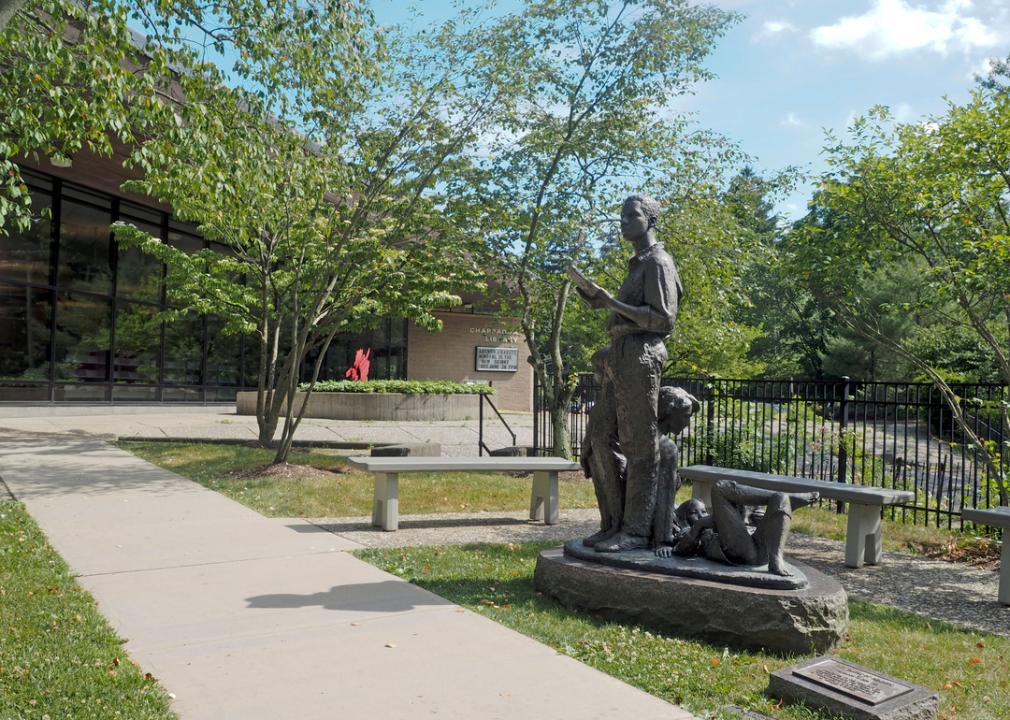
rj lerich // Shutterstock
#11. Chappaqua, New York
– Population: 1,434
– Median household income: $250,001
– Owners: 86%
– Renters: 14%
Chappaqua became the post-White House residence of Bill and Hillary Clinton, and it has a rural, woodsy feel to it. A hamlet in the town of New Castle, Chappaqua is a commuter community about 35 miles north of Manhattan, where summer concerts are held in the downtown gazebo. Horace Greeley, the founder of the New-York Tribune, was another prominent resident.
You may also like: Best county to retire in every state
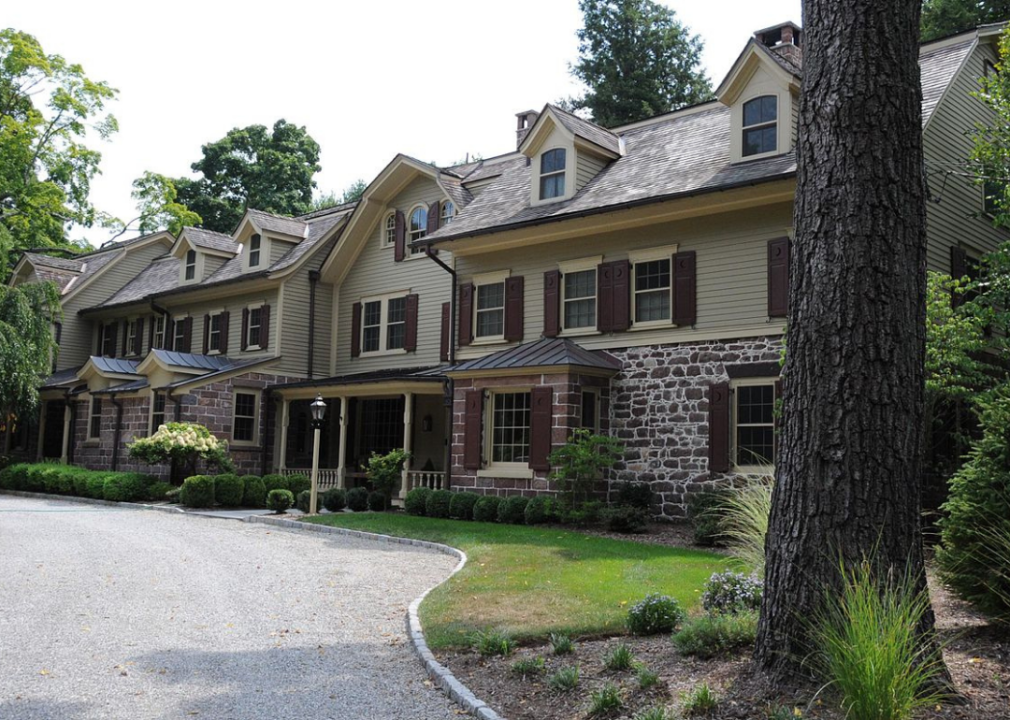
JERRYE & ROY KLOTZ, M.D. // Wikimedia Commons
#10. Ho-Ho-Kus, New Jersey
– Population: 4,094
– Median household income: $216,875
– Owners: 92%
– Renters: 8%
Ho-Ho-Kus was once known for its race track, built in the late 1860s and which operated for 70 years. The track was used for everything from horse racing to air shows, from car racing to a victory gardens during World War II. Ho-Ho-Kus was also the headquarters for a trolley that ran through towns in New Jersey and New York, beginning in the early 1900s.
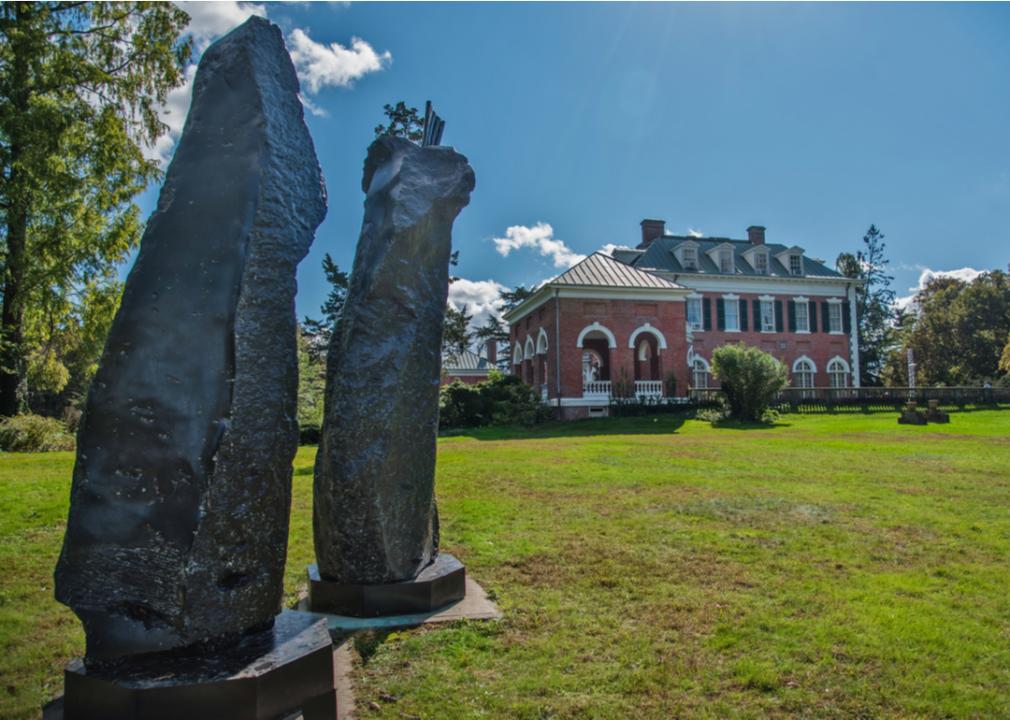
Jay Gao // Shutterstock
#9. Roslyn, New York
– Population: 2,855
– Median household income: $110,029
– Owners: 70%
– Renters: 30%
Roslyn is a historic village on Hempstead Harbor on what’s known as Long Island’s Gold Coast, named for the impressive estates built there in the late 19th and early 20th centuries. The country home of the 19th-century poet William Cullen Bryant, Cedarmere, is nearby in Roslyn Harbor.

LINYperson615 // Wikimedia Commons
#8. Herricks, New York
– Population: 4,122
– Median household income: $133,472
– Owners: 97%
– Renters: 3%
A hamlet on Long Island, Herricks is a suburb of New York City with excellent schools that have been praised for innovations such as the Student Television Arts Company, which has turned out sound engineers, producers, and Emmy Award winners. The company also has a sophisticated foreign relations program. Herricks Pond Park is a popular destination within the hamlet.
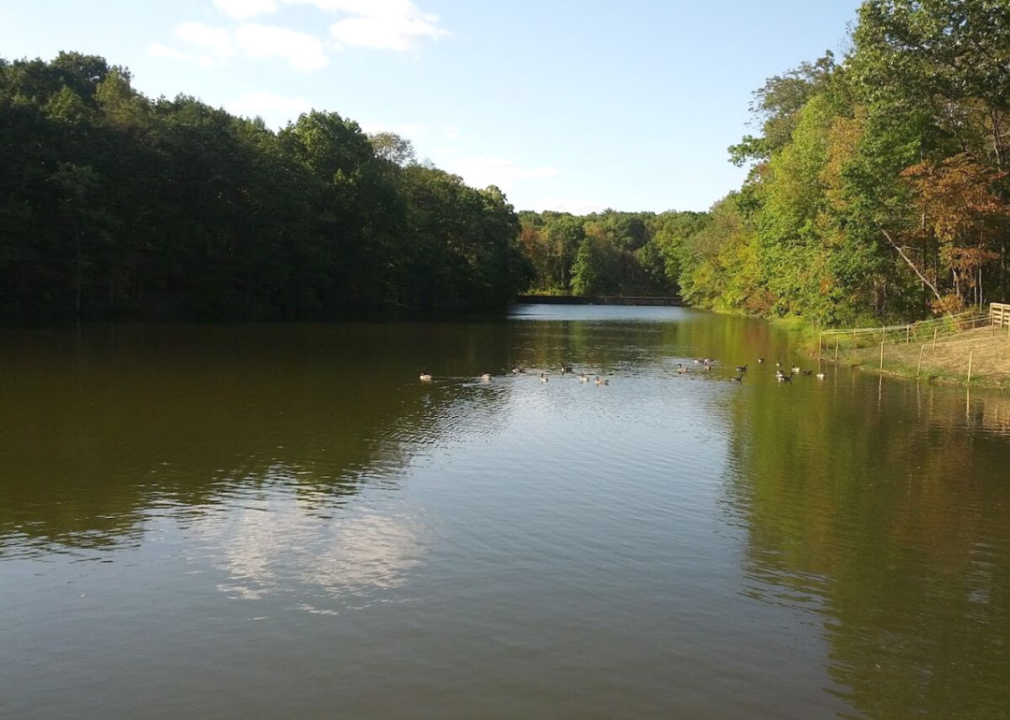
Christopher Peterson // Wikimedia Commons
#7. Mountain Lakes, New Jersey
– Population: 4,270
– Median household income: $241,667
– Owners: 95%
– Renters: 5%
Mountain Lakes is a planned residential park more than a century old. The 3-square-mile borough draws on its natural surroundings, including acres of woodland. Staying true to its namesake, nine lakes were created from springs and wetlands in town.
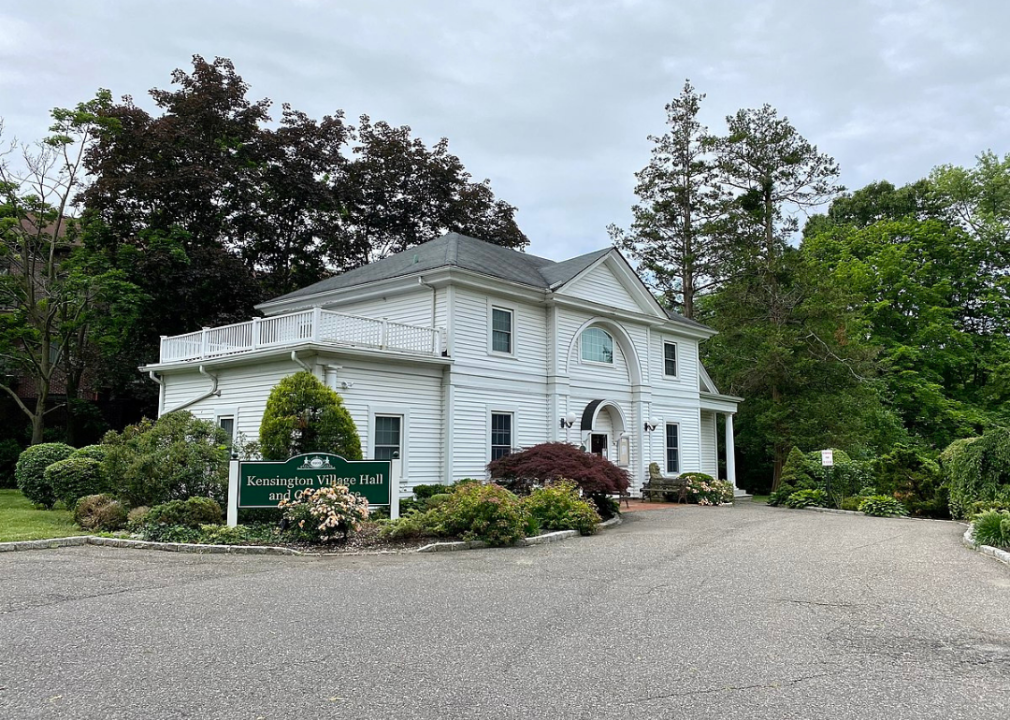
LINYperson615 // Wikimedia Commons
#6. Kensington, New York
– Population: 1,368
– Median household income: $180,750
– Owners: 86%
– Renters: 14%
Situated on Long Island’s North Shore, this New York suburb has highly rated public schools. Kensington is one of nine villages on the Great Neck peninsula and has a broad mix of residents from many different cultures. Large colonials and Tudors are among the favored style of houses here.
You may also like: Best small towns for retirees in every state
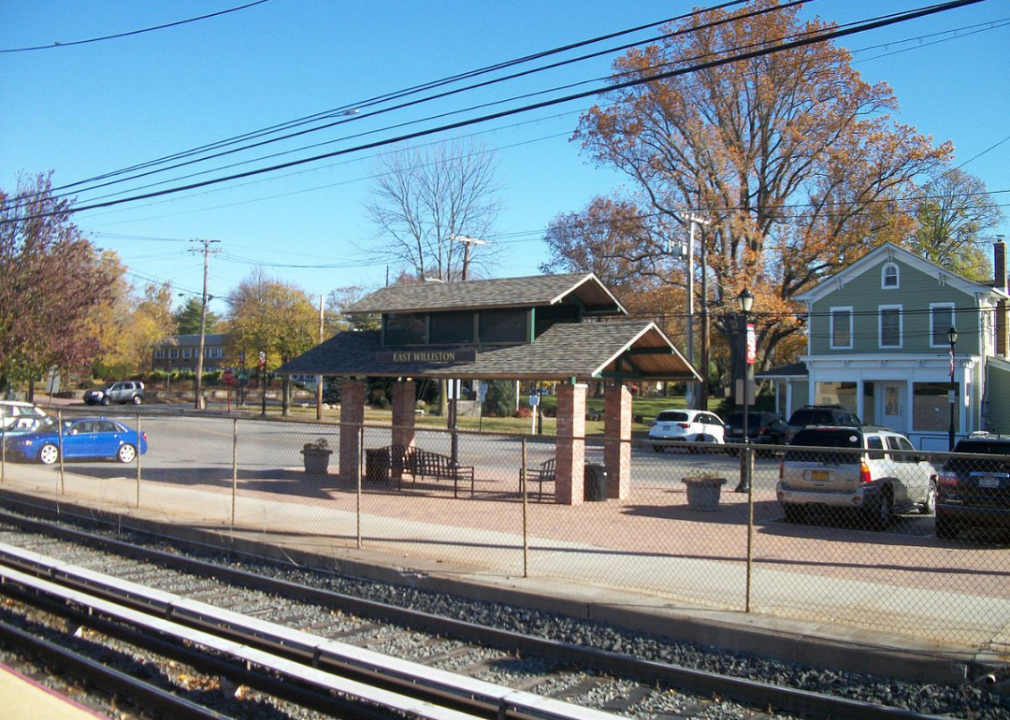
DanTD // Wikimedia Commons
#5. East Williston, New York
– Population: 2,572
– Median household income: $196,625
– Owners: 99%
– Renters: 1%
East Williston on Long Island is a historic village that retains its many traditions, among them an annual Egg Hunt, the volunteer Fire Department’s Harvest Festival, and the Village Tree Lighting Ceremony in December. An East Williston Historic District encompasses some of the village’s earliest buildings and houses.
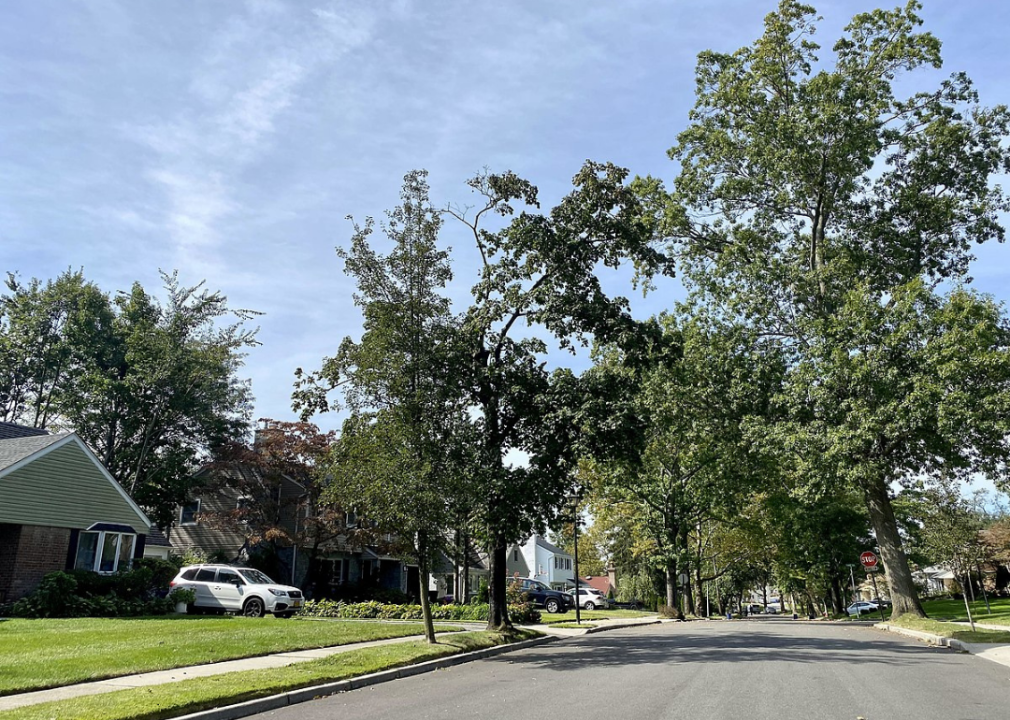
AITFFan1 // Wikimedia Commons
#4. Manhasset Hills, New York
– Population: 3,615
– Median household income: $175,139
– Owners: 96%
– Renters: 4%
On Long Island, Manhasset Hills has highly rated schools and two parks within its borders. While it is known today as a relatively small place, a 1957 New York Times article noted that 88 split-level homes were to be built on 24 acres in Manhasset Hills, a boon for the time.
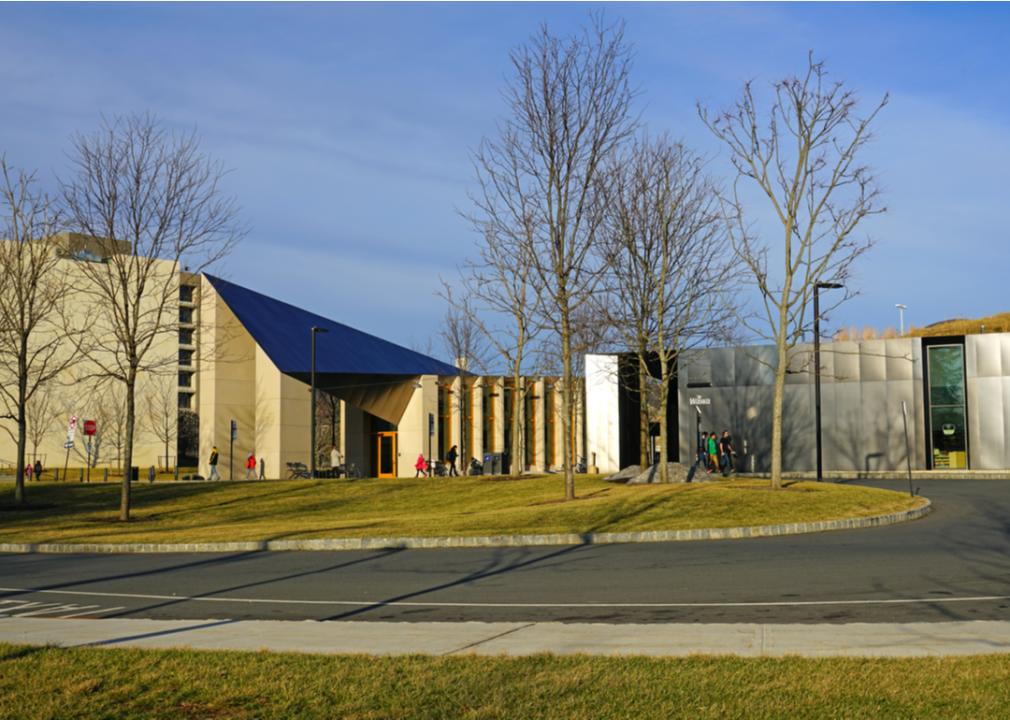
EQRoy // Shutterstock
#3. Princeton Junction, New Jersey
– Population: 2,336
– Median household income: $231,094
– Owners: 82%
– Renters: 18%
Princeton Junction is a neighborhood in West Windsor Township, and was originally a farming community dating back to the Revolutionary War. It has a small town feel while being within commuting distance to Philadelphia and New York. Princeton, with its university, historic homes, and international community, is a short drive away.
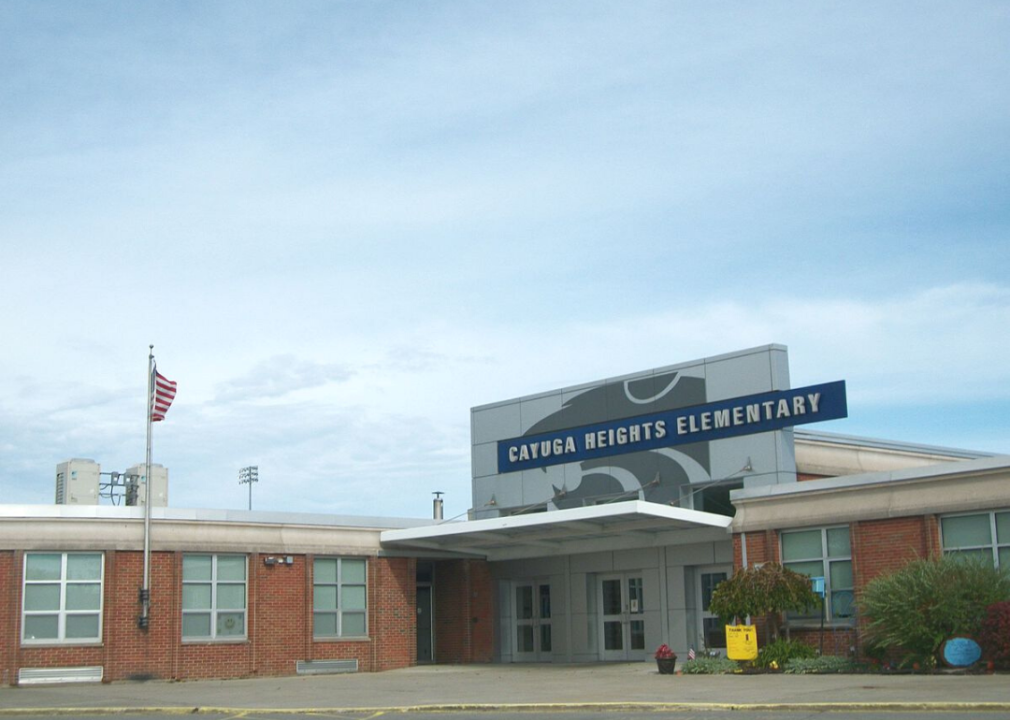
D-Day // Wikimedia Commons
#2. Cayuga Heights, New York
– Population: 3,689
– Median household income: $112,917
– Owners: 52%
– Renters: 48%
Cayuga Heights adjoins Cornell University’s campus in Ithaca. Incorporated in 1915, the village has always had a close relationship with the university. Back then, two developers bought almost 1,000 acres of farmland and laid out lots for homes in the new community. Deed and other restrictions were meant to preserve views of a lake and the valley, and maintain the village’s open feel.
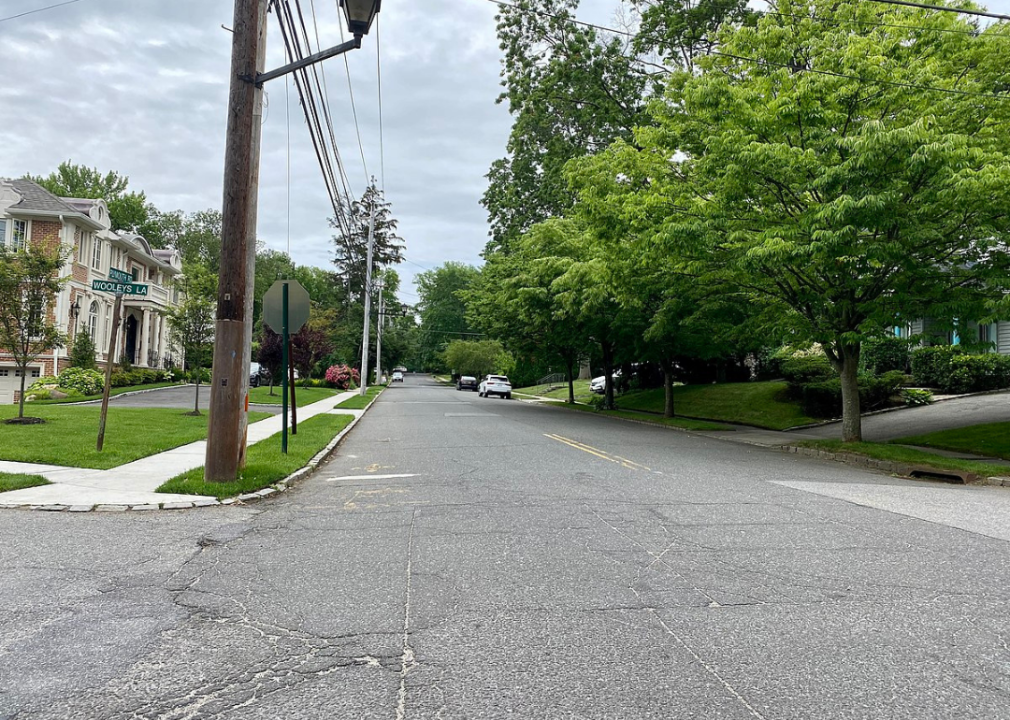
LINYperson615 // Wikimedia Commons
#1. Great Neck Gardens, New York
– Population: 1,150
– Median household income: $218,603
– Owners: 91%
– Renters: 9%
Great Neck Gardens is a New York City suburb on the Great Neck peninsula of Long Island. Nearby where F. Scott Fitzgerald set “The Great Gatsby,” newspaper listings in the early 20th century featured pricy real estate sales from Great Neck Gardens. Today, the 13-acre Allenwood Park, with a pond, ball fields, tennis courts, and a gazebo, is a favorite among locals.
You may also like: Best places to retire on the East Coast